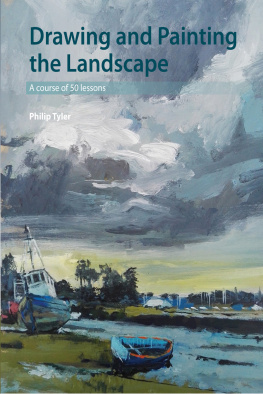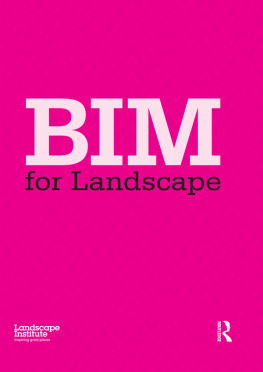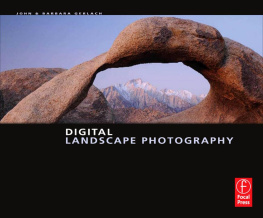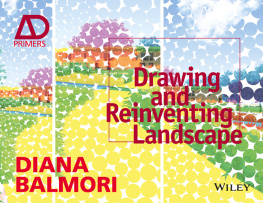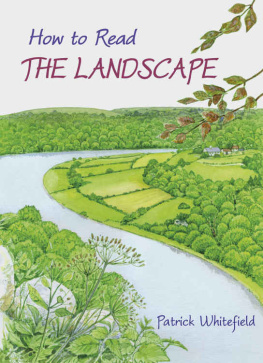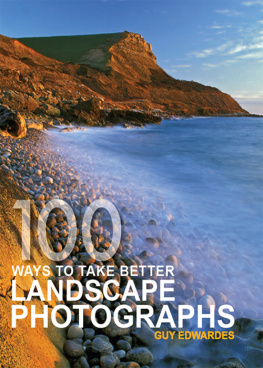AN INTRODUCTION TO LANDSCAPE
An Introduction to Landscape
Peter J. Howard
Bournemouth University, UK and Landscape Research Group
First published 2011 by Ashgate publishing
Published 2016 by Routledge
2 Park Square, Milton Park, Abingdon, Oxon OX14 4RN
711 Third Avenue, New York, NY 10017, USA
Routledge is an imprint of the Taylor & Francis Group, an informa business
Copyright Peter J. Howard 2011
Peter J. Howard has asserted his right under the Copyright, Designs and Patents Act, 1988, to be identified as the author of this work.
Every effort has been made to trace copyright holders and to obtain their permission for the use of copyright material. The publisher apologises for any errors or omissions and would be grateful if notified of any corrections that should be incorporated in future reprints or editions of this book.
All rights reserved. No part of this book may be reprinted or reproduced or utilised in any form or by any electronic, mechanical, or other means, now known or hereafter invented, including photocopying and recording, or in any information storage or retrieval system, without permission in writing from the publishers.
Notice:
Product or corporate names may be trademarks or registered trademarks, and are used only for identification and explanation without intent to infringe.
British Library Cataloguing in Publication Data
Howard, Peter, 1944-
An introduction to landscape.
1. Landscapes. 2. Landscapes--Symbolic aspects. 3. Landscape assessment. 4. Landscape protection.
I. Title
304.2-dc22
Library of Congress Cataloging-in-Publication Data
Howard, Peter, 1944-
An introduction to landscape / by Peter J. Howard.
p. cm.
Includes bibliographical references and index.
ISBN 978-1-4094-0384-5 (hardback) -- ISBN 978-1-4094-0383-8 (ebook)
1. Landscape assessment. 2. Landscapes--Cross-cultural studies. 3. Landscape protection. 4. Cultural property--Protection. 5. Environmental management. 6. Human geography. 7. Nature (Aesthetics) 8. National characteristics. I. Title.
GF90.H69 2011
304.2--dc23
2011015337
ISBN 13: 978-1-4094-0384-5 (hbk)
ISBN 13: 978-1-4094-0385-2 (pbk)
Contents
Knowledge transfer is now a key phrase in academic circles in the UK. People have become aware, at long last, of the gap between the research carried out in universities and even the teaching there and the thinking of much of the people. Scientists have largely failed to convince people of the realities of climate change and this has been a wake-up call in many disciplines. In landscape there has long been effective transfer of knowledge between many university disciplines and the people who work in various government departments managing the landscape. But new undergraduates, and the millions of people concerned for their places, are often unaware of recent thinking. Most are probably unaware that there is now a European Landscape Convention enshrined in UK law. This textbook is for them.
It arose when I was asked if I would write a follow-up to a previous textbook concerned with heritage, but my primary concern had long been rather more specifically involved with landscape, and the publishers allowed me the privilege of writing to my obsession. My thanks to Val Rose for her support throughout.
Landscape became the central feature of my thinking when I became the first geographer to be employed in a school of art, but it had long had a hold on me. Travelling always meant looking out of the window, waiting for the change in the geology. Soon I discovered the Landscape Research Group, which has been my academic home for nearly 40 years, 10 of them spent editing their journal Landscape Research. My thanks to my many colleagues in the group, coming with a whole variety of perspectives to Jay Appleton, David Lowenthal, David Coleman, Jacqueline Burgess, Kenneth Olwig and Ian Thompson, among many others. I have learned much from them and from my students and my wife and family, who would keep asking questions which made me think again. No doubt they would all take issue with some of the ideas in this book, but the blame is clearly down to me alone.
The group was also responsible for my closeness to the making and application of the European Landscape Convention. As the International Officer I was the one who was the observer at so many meetings and workshops, and the development of my contacts all over Europe has stemmed from that interest. For readers from other continents I must admit that the attitudes to landscape here expressed are very Eurocentric, and there are certainly major differences in other parts of the world. If the book makes you consider those differences, I rest content.
British readers will also notice that the examples cited here are very often from my own landscapes in the south-west of England, and especially Devon, where I have lived for 40 years, still with much of my family close by. If this remains as a constant reminder, perhaps even an irritant, that landscape as now defined is deeply personal, then that is also the intention. A visiting lecturer from the National Trust said of my students that they didnt know all the answers, but they certainly knew all the questions. I could ask no more. If, at the end, the reader knows the questions, then that will be quite sufficient.
Peter Howard
Winkleigh, 2011
.
.
.
.
.
.
.
.
.
.
.
.
.
.
.
.
.
.
.
.
.
.
.
.
.
.
.
.
.
.
.
.
.
.
.
.
.
.
.
.
.
.
.
.
.
.
.
.
.
.
.
.
.
.
.
.
.
.
.
.
.
.
.
.
.
.
.
.
.
.
.
.
.
.
.
.
.
.
Those who need to read this textbook on landscape will not fit easily into even a few categories. Many may be students, but their main subject might be one of many; others may be involved in one of the many battles concerning landscape alterations that are under way in courts and inquiries in most countries. Others may hope to discover more about places they love, or even some advice on designing and planting their garden. Some of these will be disappointed, especially the last, as the authors aim is that you should learn more about yourself, and hence about your attitude to landscape. I cannot even promise that you will learn what landscape is, although you will be given some of the arguments and elements that might allow you to answer that question for yourself. At the very beginning we cannot assume very much more than landscape is out of doors so if I want to look at a landscape I must go to the window, and there it is. However, immediately we can discover that some places are more landscape than others. The view from my back window looks out across fields to Dartmoor in the distance (Figure 1.1), and this is much more landscape than the view from my front window to the road and the garage next door (Figure 1.2). As for the outdoors, even that might be questioned as I am surrounded by paintings and photographs of places, and these are certainly called landscapes.



